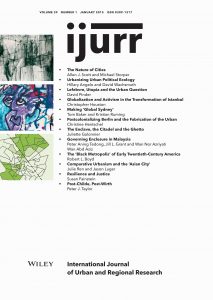By defining and measuring a dimension of the Black Metropolis in terms of occupational representation, this study advances research on the urban black communities of the early twentieth-century United States. Census data show that: (1) Bronzeville (Chicago) was the premier Black Metropolis overall and the black communities of urban-industrial centers in the Midwest had locational advantages that rivaled those of Harlem (New York) with respect to the rise of the black professional and entrepreneurial classes; (2) The standing of Harlem as a preeminent Black Metropolis was due mainly to opportunities generated by unique features of New York that aided blacks’ entry into an extensive array of artistic, entertainment and mass media occupations; (3) The black community of Washington, DC, was the only substantial Black Metropolis below the Mason-Dixon Line because of advantages that derived from the city’s location above areas of the lower South and from its status as the capital of the US federal government; (4) In general, the northern Black Metropolis was characterized more by opportunities for blacks to participate in politics and public life and to create vital cultural institutions than by opportunities for blacks to economically gain through professions or businesses.
Details
Written by:
Robert L. Boyd
Digital Object Identifier (DOI)
10.1111/1468-2427.12048
About DOI
Read full article as PDF
Read full article as HTML
See the references for this article

